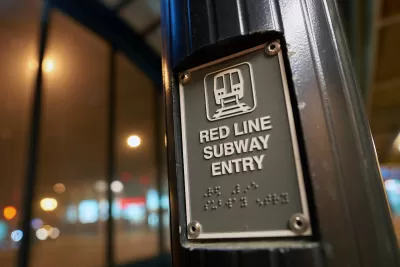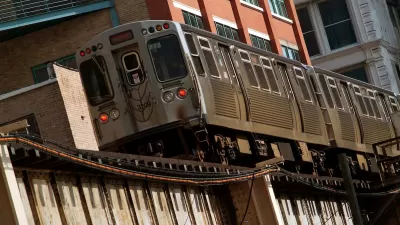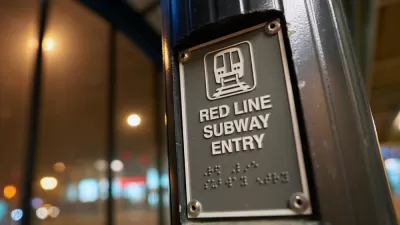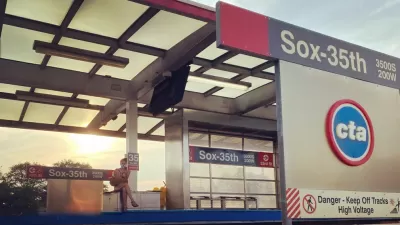The city’s transit agency is undertaking its biggest expansion ever to finally bring rail to the South Side.

The Chicago Transit Authority (CTA) is making a close to $2 billion investment in the system’s largest expansion ever, reports Zach Mortice in The Architect’s Newspaper.
The plan aims to fill gaps in the city’s transit system and promote transit-oriented development (TOD) by bringing rail to the South Side. “The city’s goals are to use transit to increase housing access, aid local businesses, promote local cultural assets, and promote wellness.”
The extended Red Line will use primarily elevated tracks, with no intersections with existing roadways. According to the article, of the 86 parcels bought by the city for the project, less than half are single-family homes, and many of them are vacant. “The Federal Transit Administration New Starts grant of $1.97 billion will be delivered by 2024, providing more than half of the project’s $3.6 billion budget. Local funding comes from a $950 million transit tax-increment financing fund.”
The city is targeting areas around the new stations for development, with transit as a catalyst. “Most notably, the station at 111th Street is planned as an anchor for the Roseland Medical District, a multipurpose health campus surrounding the 100-year-old Roseland Community Hospital, a few blocks away.” For residents of the far South the CTA says Side who commute to the Loop, the Red Line extension will save them roughly 30 minutes per trip.
FULL STORY: CTA’s largest-ever expansion reaches out to fulfill a transit gap

Study: Maui’s Plan to Convert Vacation Rentals to Long-Term Housing Could Cause Nearly $1 Billion Economic Loss
The plan would reduce visitor accommodation by 25,% resulting in 1,900 jobs lost.

North Texas Transit Leaders Tout Benefits of TOD for Growing Region
At a summit focused on transit-oriented development, policymakers discussed how North Texas’ expanded light rail system can serve as a tool for economic growth.

Using Old Oil and Gas Wells for Green Energy Storage
Penn State researchers have found that repurposing abandoned oil and gas wells for geothermal-assisted compressed-air energy storage can boost efficiency, reduce environmental risks, and support clean energy and job transitions.

Private Donations Propel Early Restoration of Palisades Playground
Los Angeles has secured over $1.3 million in private funding to restore the Pacific Palisades playground months ahead of schedule, creating a modern, accessible space that supports community healing after recent wildfires.

From Blight to Benefit: Early Results From California’s Equitable Cleanup Program
The Equitable Community Revitalization Grant (ECRG) program is reshaping brownfield redevelopment by prioritizing projects in low-income and environmental justice communities, emphasizing equity, transparency, and community benefits.

Planting Relief: Tackling Las Vegas Heat One Tree at a Time
Nevada Plants, a Las Vegas-based nonprofit, is combating the city’s extreme urban heat by giving away trees to residents in underserved neighborhoods, promoting shade, sustainability, and community health.
Urban Design for Planners 1: Software Tools
This six-course series explores essential urban design concepts using open source software and equips planners with the tools they need to participate fully in the urban design process.
Planning for Universal Design
Learn the tools for implementing Universal Design in planning regulations.
Ascent Environmental
Borough of Carlisle
Institute for Housing and Urban Development Studies (IHS)
City of Grandview
Harvard GSD Executive Education
Toledo-Lucas County Plan Commissions
Salt Lake City
NYU Wagner Graduate School of Public Service





























